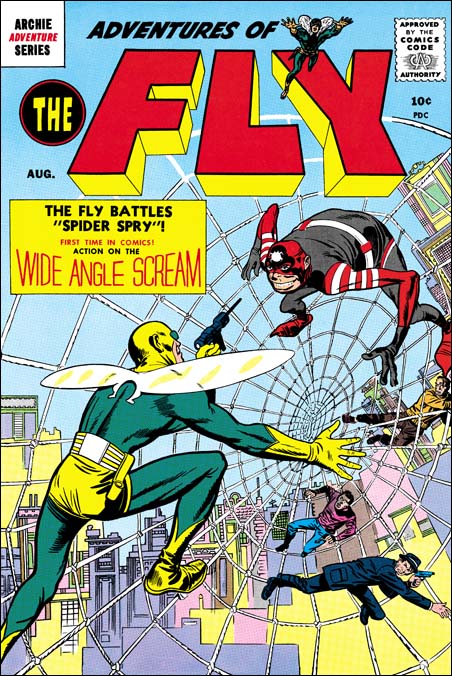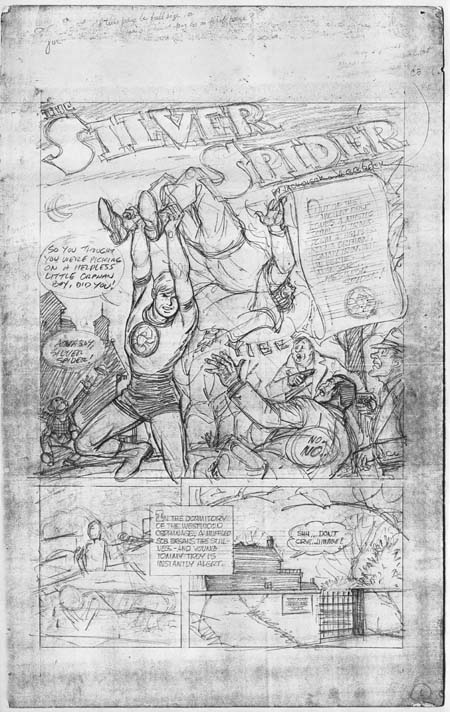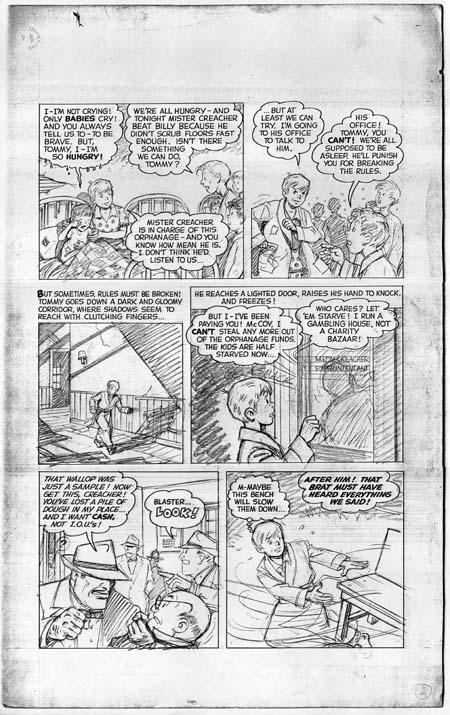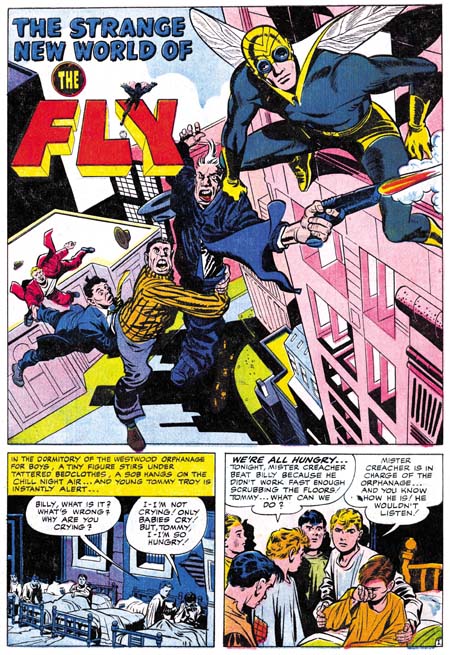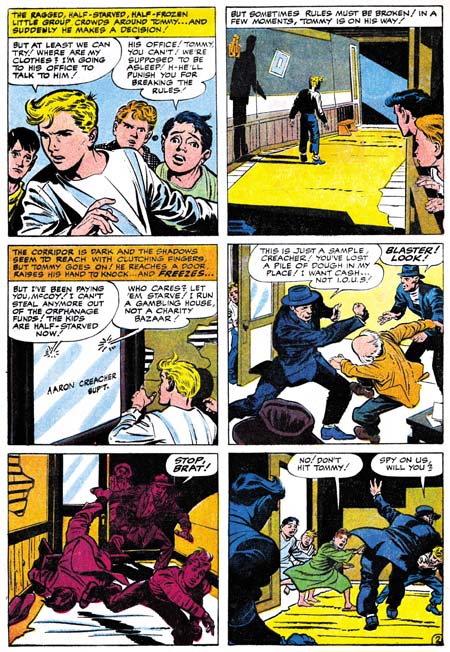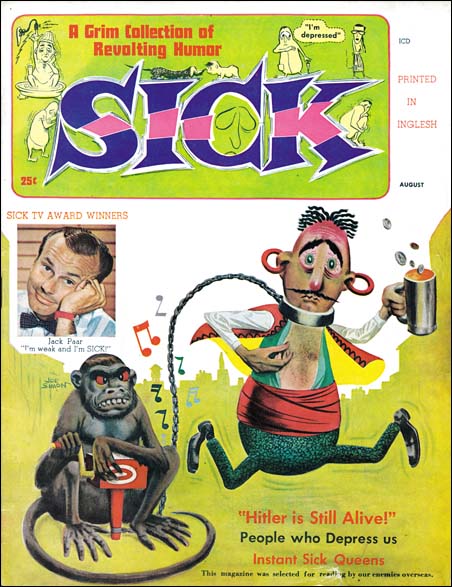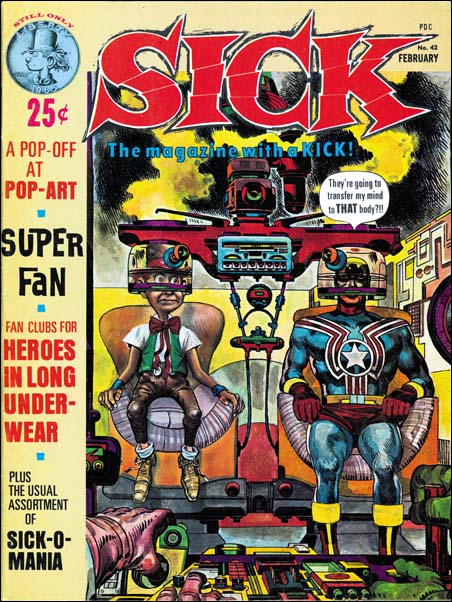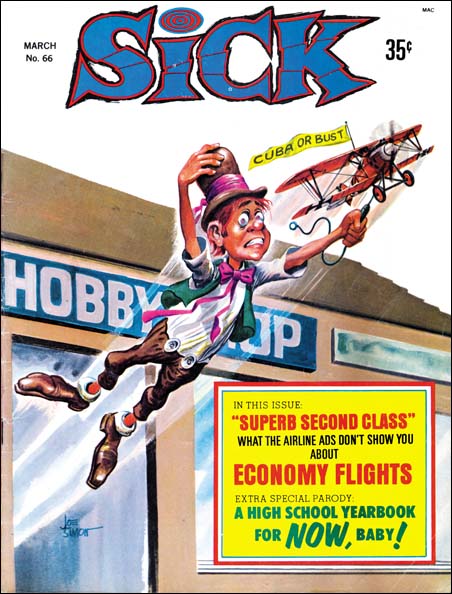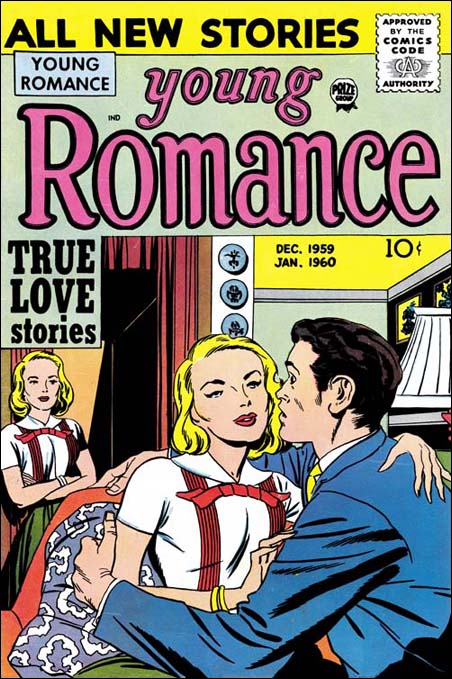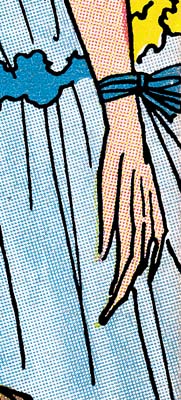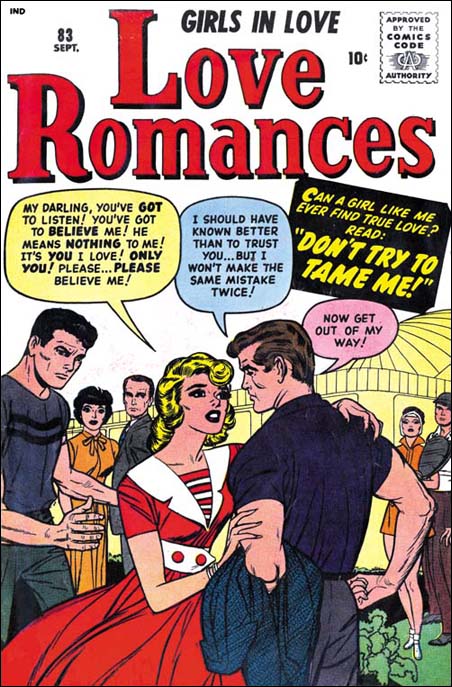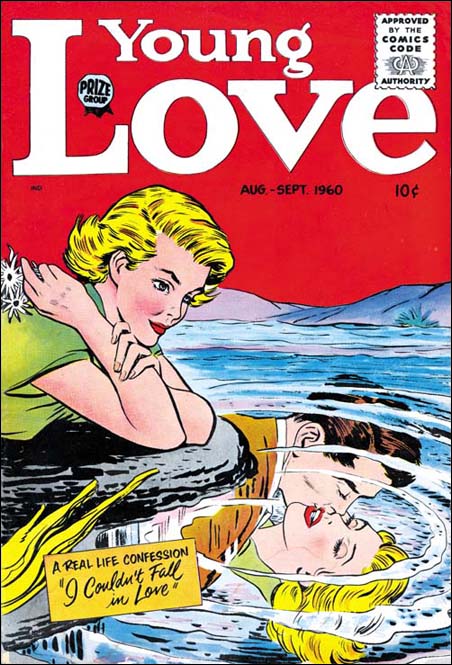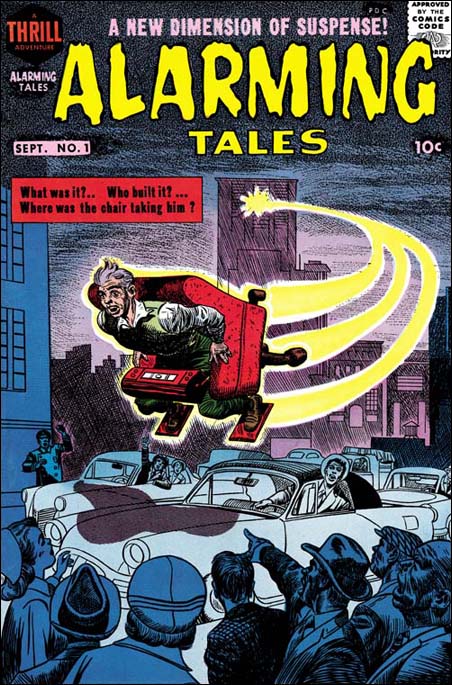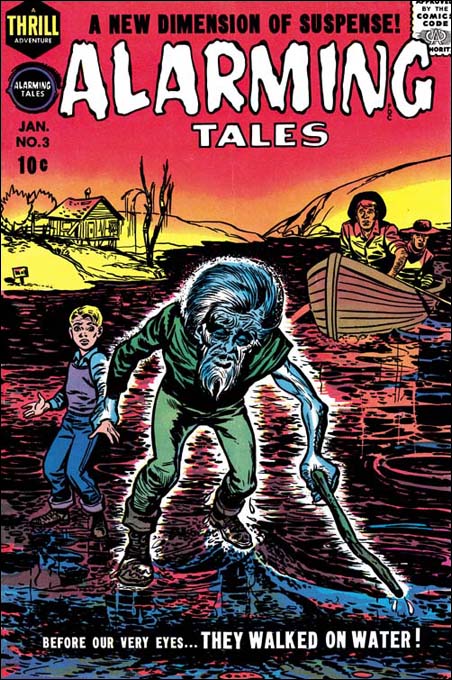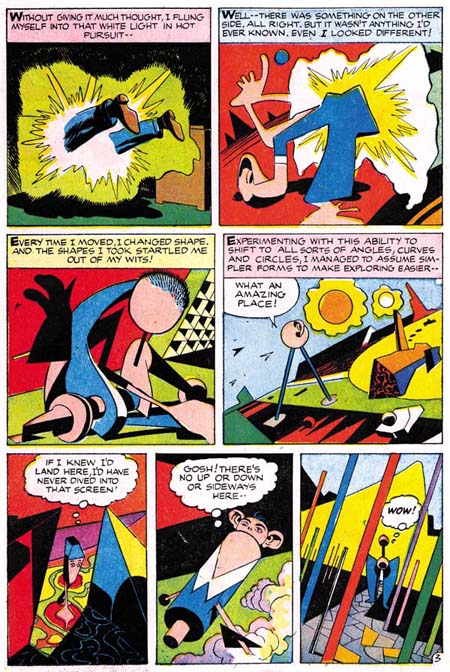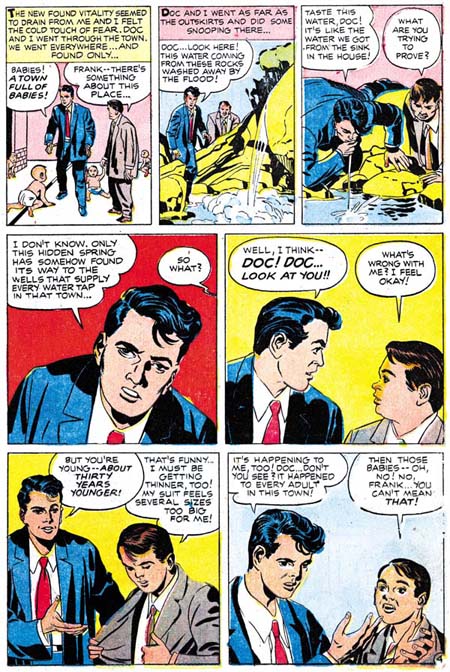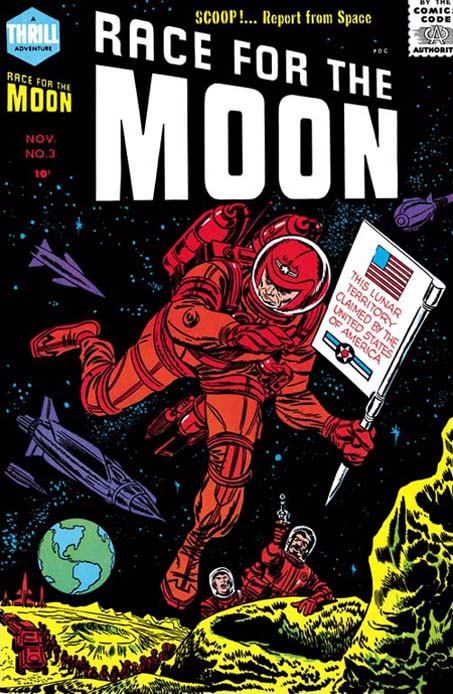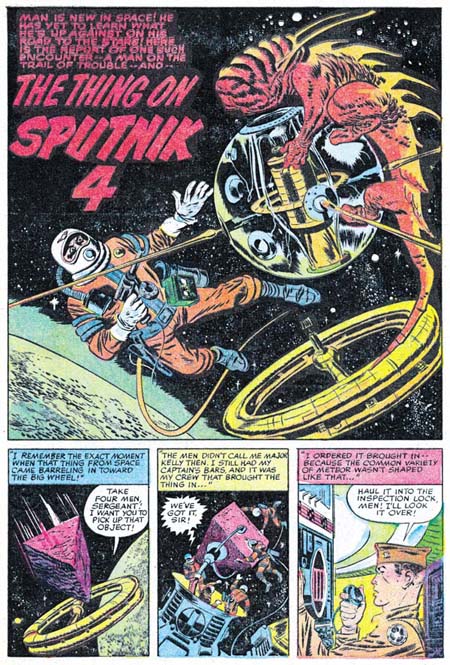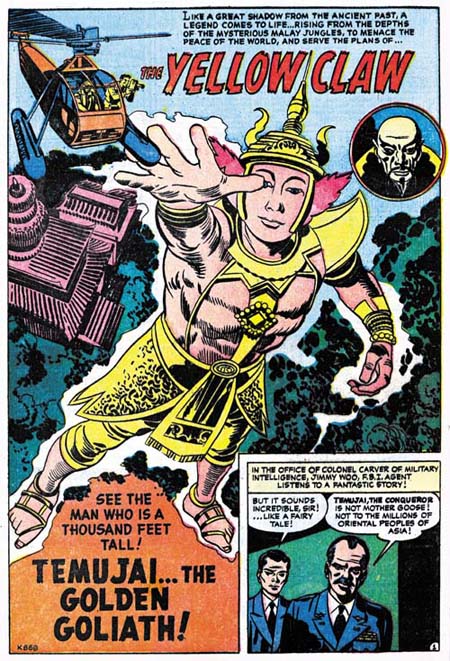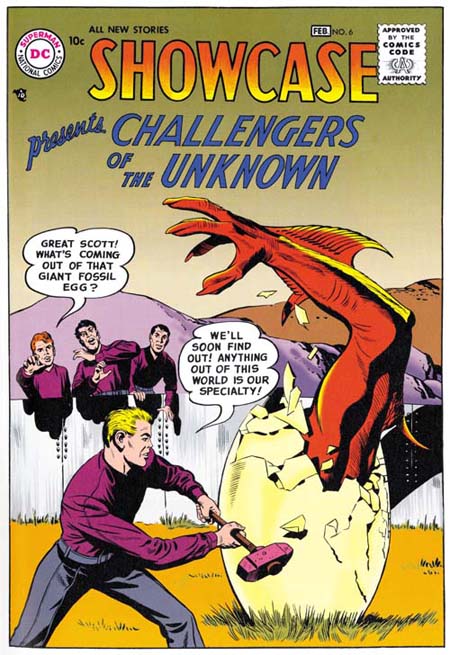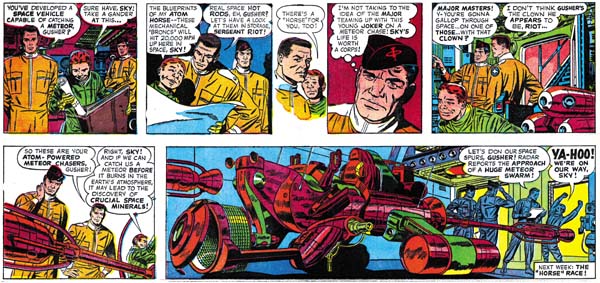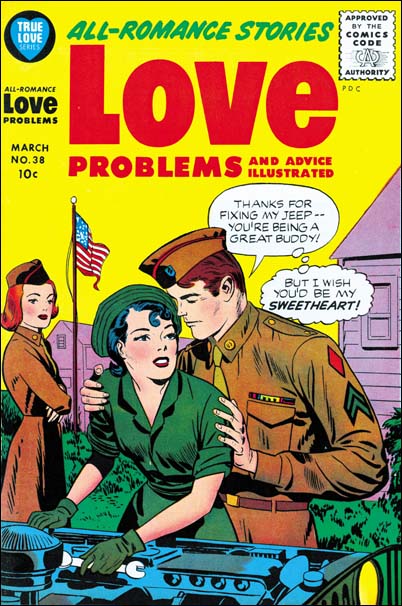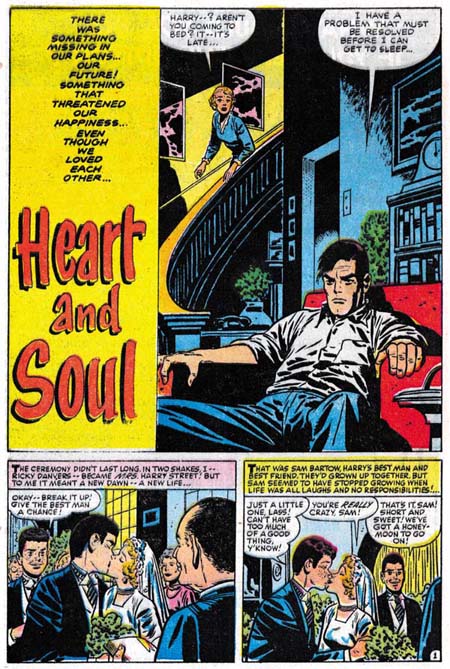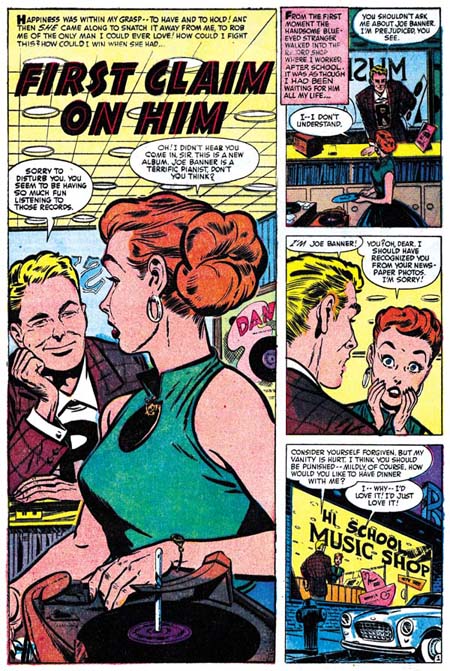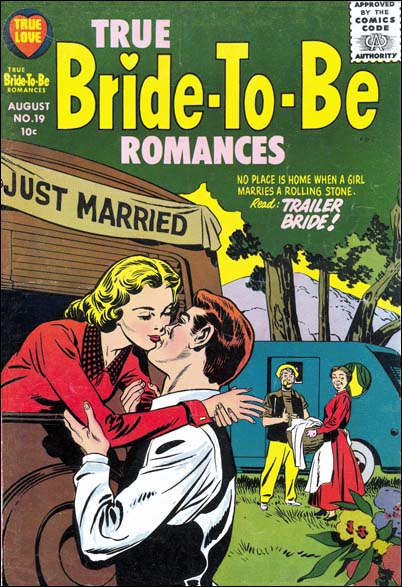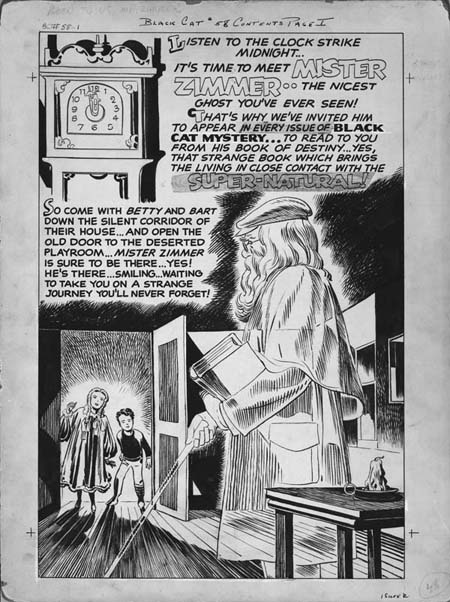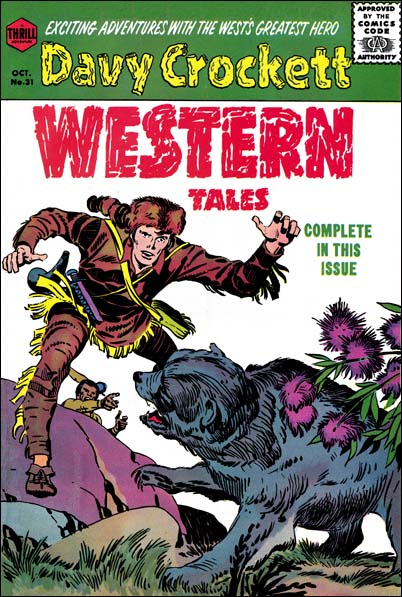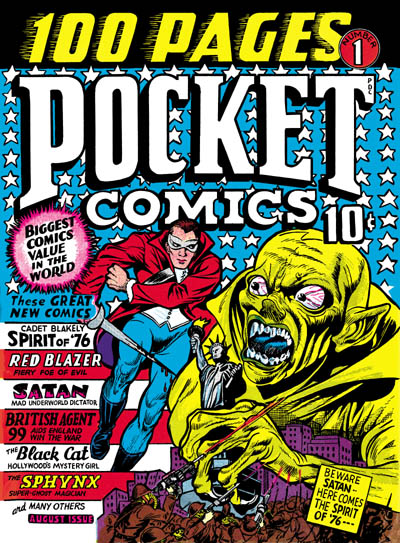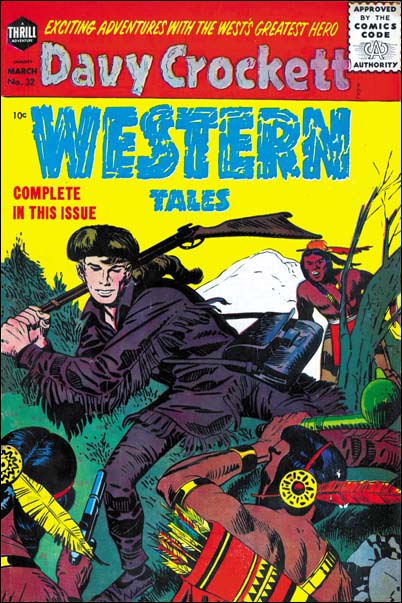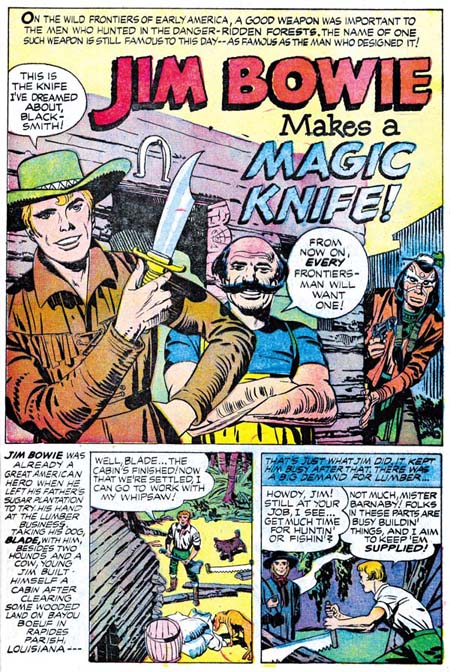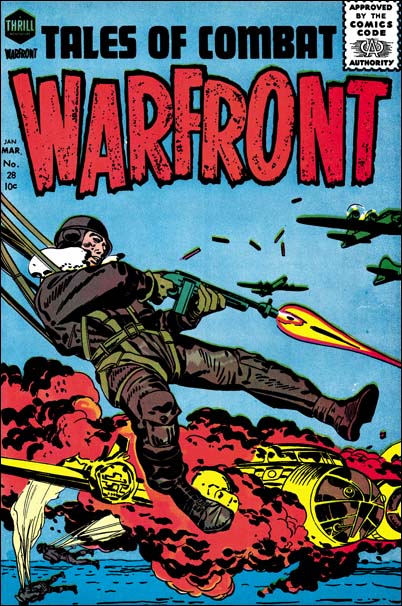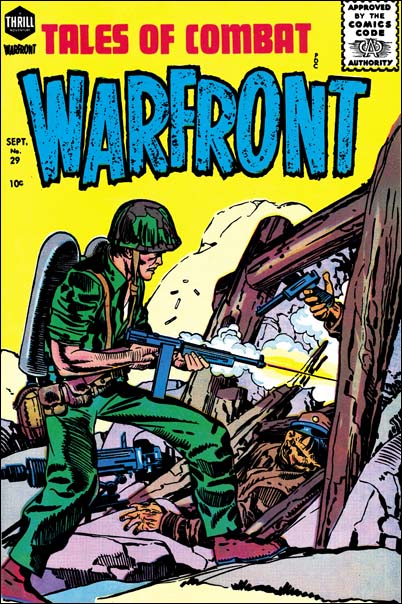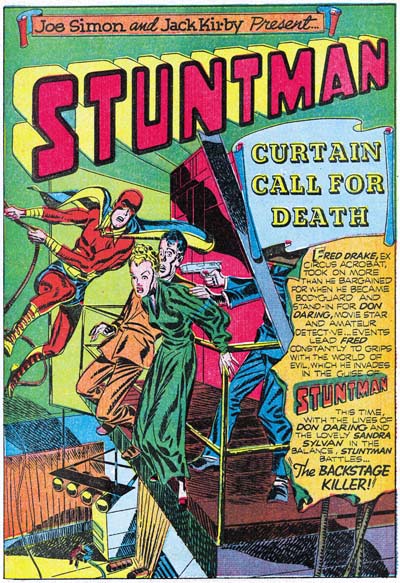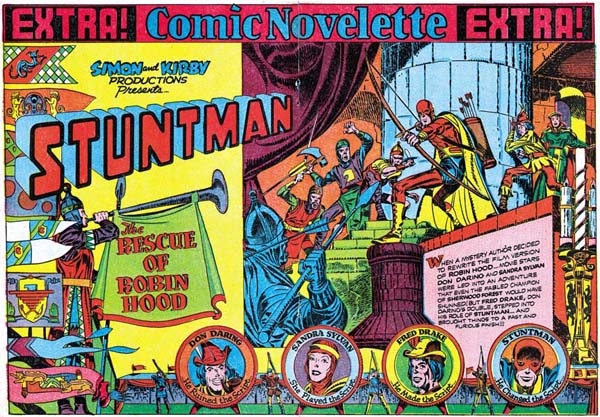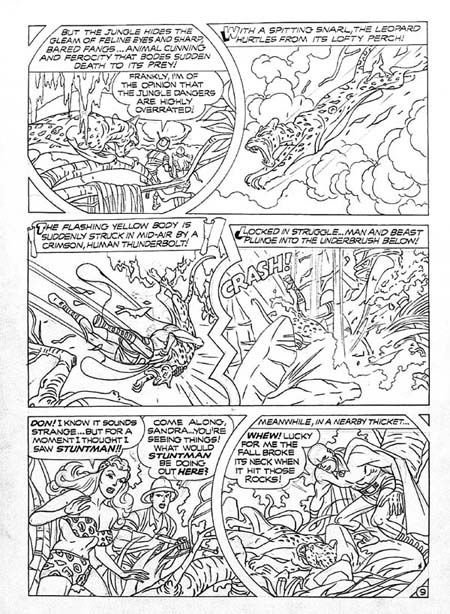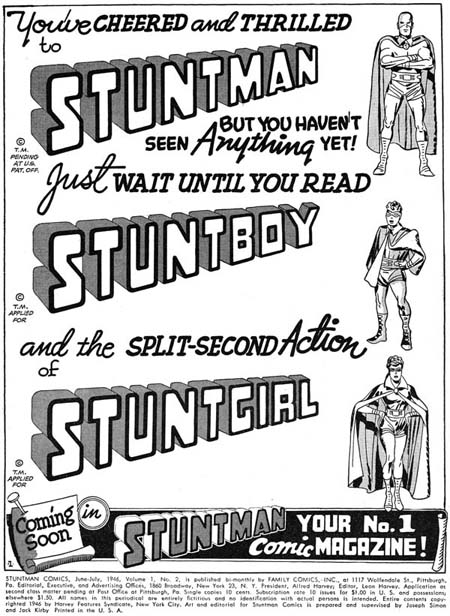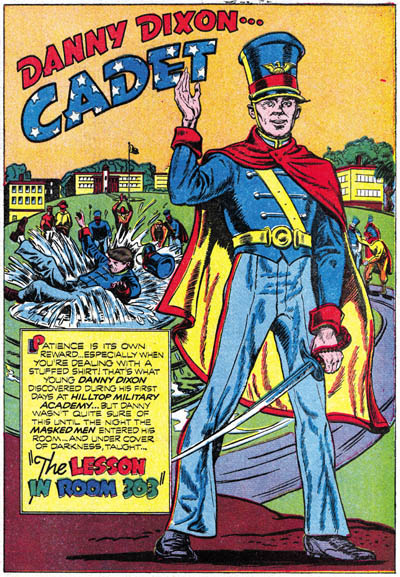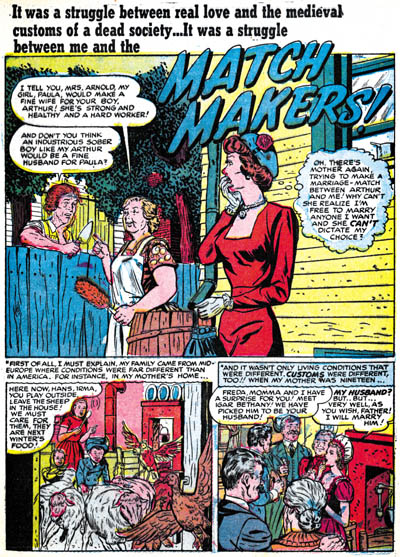After his military service Joe Simon rejoined Jack Kirby. But rather then just resume working for DC, the two wanted to find a better deal and produce entire comics. S&K made an agreement with Al Harvey to create two new titles, Stuntman and Boy Explorers. Jack did the penciling for the title features while back up features were penciled by artists like Bill Draut and Ken Riley. Joe Simon would also provide some additional features; the Duke of Broadway, Vagabond Prince, and Kid Adonis. Unfortunately this all happened during a post-war comic glut and both new titles would be cancelled. Boy Explorers #2 and Stuntman #3 would be sent to subscribers only and would be reduced in size as well as content. The origin story for Vagabond Prince initially meant for Boy Explorers #2 would not see print until the 80’s. Although these titles were cancelled there seems to have been some unused material left. Harvey would publish these stories about a year later in Black Cat and Green Hornet comics.
Joe Simon has always said that he drew all the stories for these three features himself. However some have attributed parts or all of some stories to Jack Kirby. For me this is another group of work that so thoroughly looks like Joe’s effort I am amazed that there is any question about it. Joe is drawing in a Kirby-like style, but I would not say he is really mimicking Jack. Simon has his own visual humor that turns up often in these stories. Features like the hero’s square jaw that we have seen before reappear here. But again I ask the reader to look for traits belonging to Joe or Jack and not to judge something as Jack’s solely because of how good a page is.
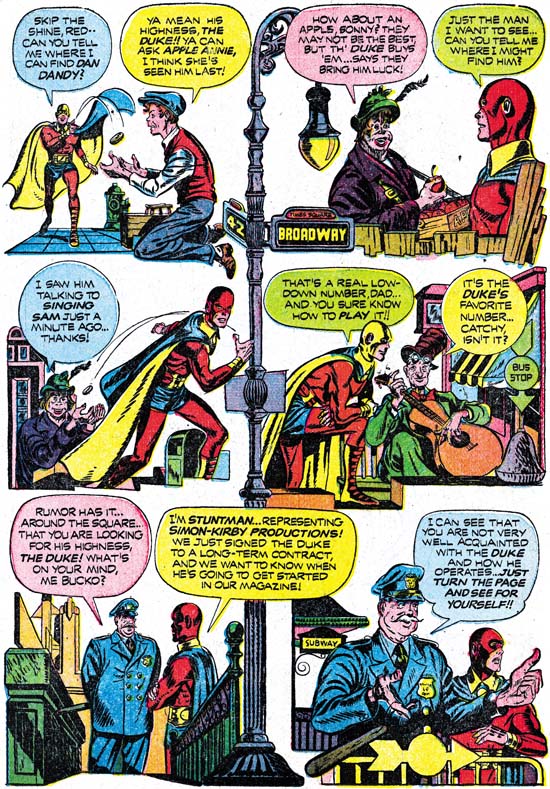
Stuntman #2 (June 1946) introduction page by Jack Kirby
There is a rather interesting page by Jack showing Stuntman asking various characters from the Duke of Broadway feature where the Duke himself was. It is therefore useful in showing how Kirby would do the Duke’s cast. As would be expected they are similar to those from the actual story, but careful examination reveals differences.
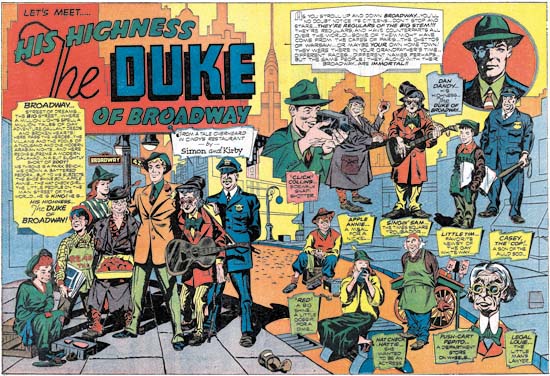
Boy Explorers #1 (May 1946) “The Duke of Broadway” by Joe Simon
Enlarged image
The art for double page splash seems more finished and in a different style then the rest of the story. It do not think this is because some other artist did the splash. Rather I believe Joe drew it first as a presentation piece and therefore spent more time polishing it up.

Black Cat #6 (June 1947) “Fear” by Joe Simon
I could be wrong but I feel that although early in his career Jack Kirby paid a lot of attention to what artists like Hal Foster and Alex Raymond were doing, later Jack seemed to stop looking at other comic artists. That is not to say Kirby gave up using swipes and otherwise finding sources of inspiration. Just that Jack would now turn to photos, paintings and similar fields outside sequential art. Joe Simon on the other hand did seem to keep an eye on what other comic book artists were doing. The above splash page from “Fear” (actually one of two splash pages for this same story) is an example of this. Here Joe gives response to the innovative splash pages that Will Eisner had been doing in his newspaper section comic book the Spirit. Again some have attributed this page to Kirby. But a close look at the figures indicates that this is Joe’s work.

Black Cat #7 (August 1947) “Topsy Turvy Tavern” by Joe Simon
Some of the Simon touches we saw early in his career are no longer used at this point, such as the drawing the eye and eyebrow as one angular unit. But in Captain America #1 we saw Joe draw Bucky with a sort of muzzle. In “Topsy Turvy Tavern” the Duke is accompanied with a young boy who Joe draws with the same sort of projecting lower face. Also note the running figure with his sole turned toward the reader. This is a typical Kirby trait but as we saw in our last chapter Simon has adopted it as can be seen in his work on Adventures Is My Career.
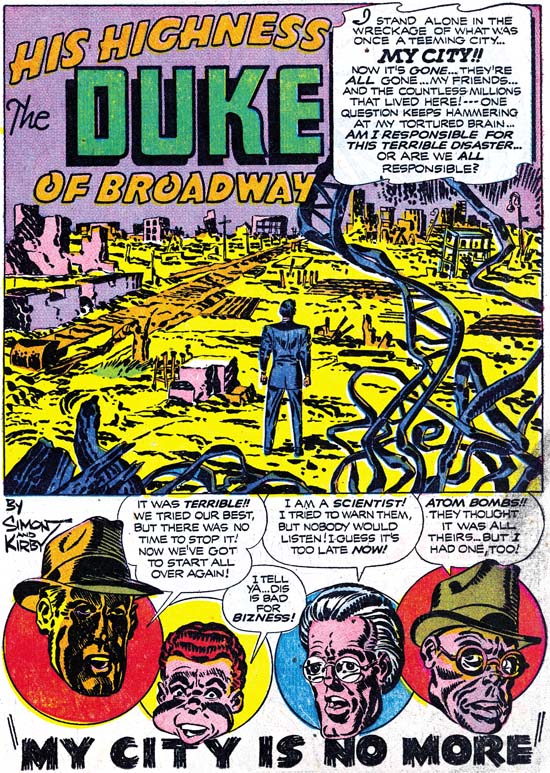
Black Cat #5 (April 1947) “My City Is No More” by Joe Simon
There are pages from “My City Is No More” that some have attributed to Kirby. Yes some of these pages are very effective and the story on a whole is a masterpiece. But when I look at the drawing of the faces and figures it pretty much looks like the work of Joe Simon. Although I cannot find examples for some of the non-figurative drawing (particular the explosions) from Simon’s prior work, I know of nothing similar from Kirby’s past either. I cannot help but be suspicious that some assign these pages to Kirby just because they look so good. But because the non-figurative drawing does not seem to provide evidence, I prefer to base my attributions on the figurative work, and that seems to have been done by Joe.
The splash page I provided above does have one of the few convincing examples of some Kirby effort in these particular features. I am sure that the floating head of the villain (extreme right) was done by Jack. Joe did the villain in the rest of the story differently, with a longer face. Was Jack stepping in to correct some problem? I have previously posted on Joe and Jack as editors and part of that post included an example of Jack touching up a panel from a Vagabond Prince story. Unfortunately it is not possible to reach a valid conclusion about this here when we are dealing with the printed results, only the original art might provide the answer. It is possible, but not at all clear, that Jack might have had a hand in the floating head of the scientist (second from the right). The other two floating heads were clearly done by Joe. In these stories Joe has a tendency to draw the hero not only with a square jaw but also a rather long face. The Duke in this story, including this floating head, is an extreme example of this. Simon drawing the hero with long faces seem to be restricted to this period and does not recur.
I have provided examples for this chapter from the Duke of Broadway stories. Stylistically the Vagabond Prince and the Kid Adonis stories are not at all different. So let me close this chapter with a page of another of America’s royalty. Note the use of oversized figures.
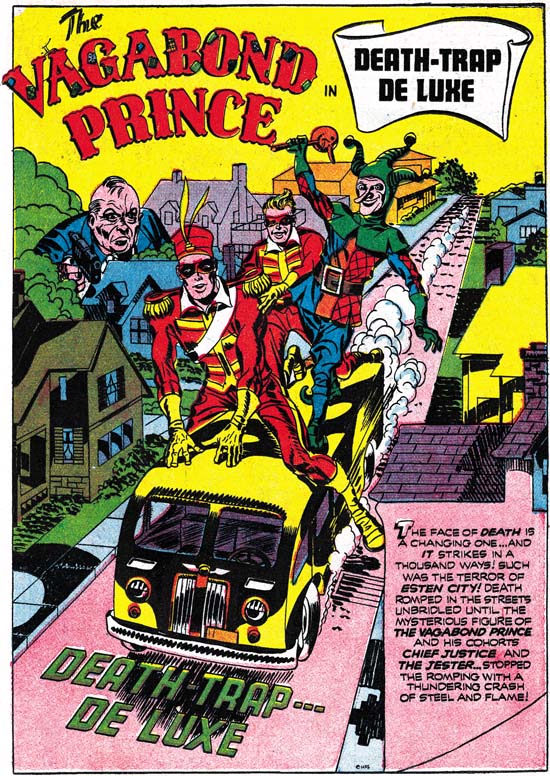
Black Cat #7 (August 1947) “Death Trap De Luxe” by Joe Simon


